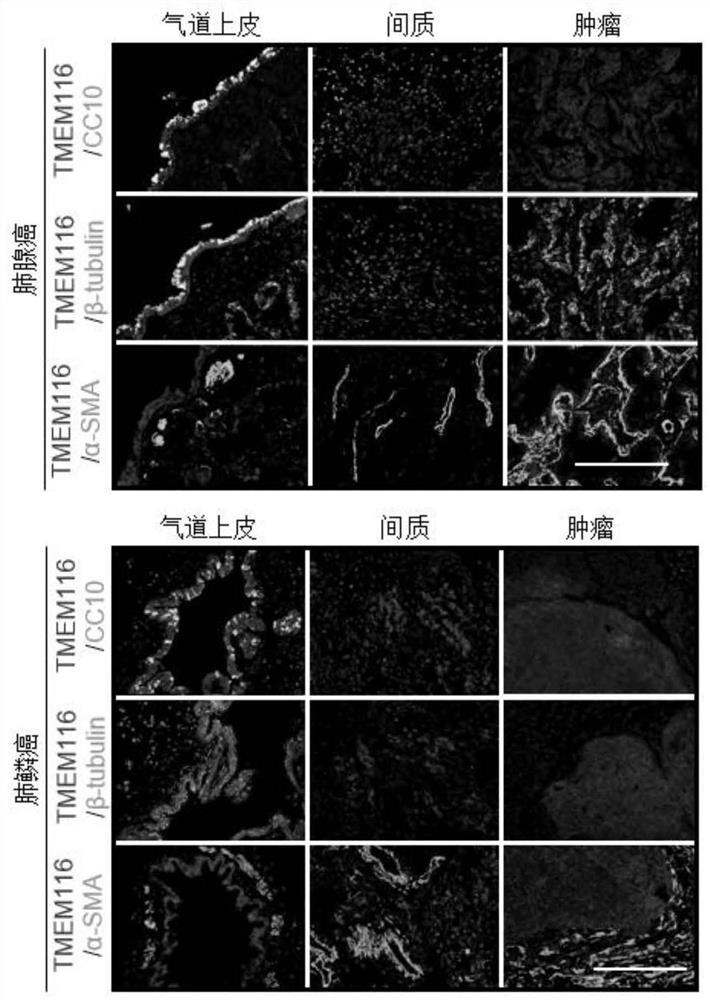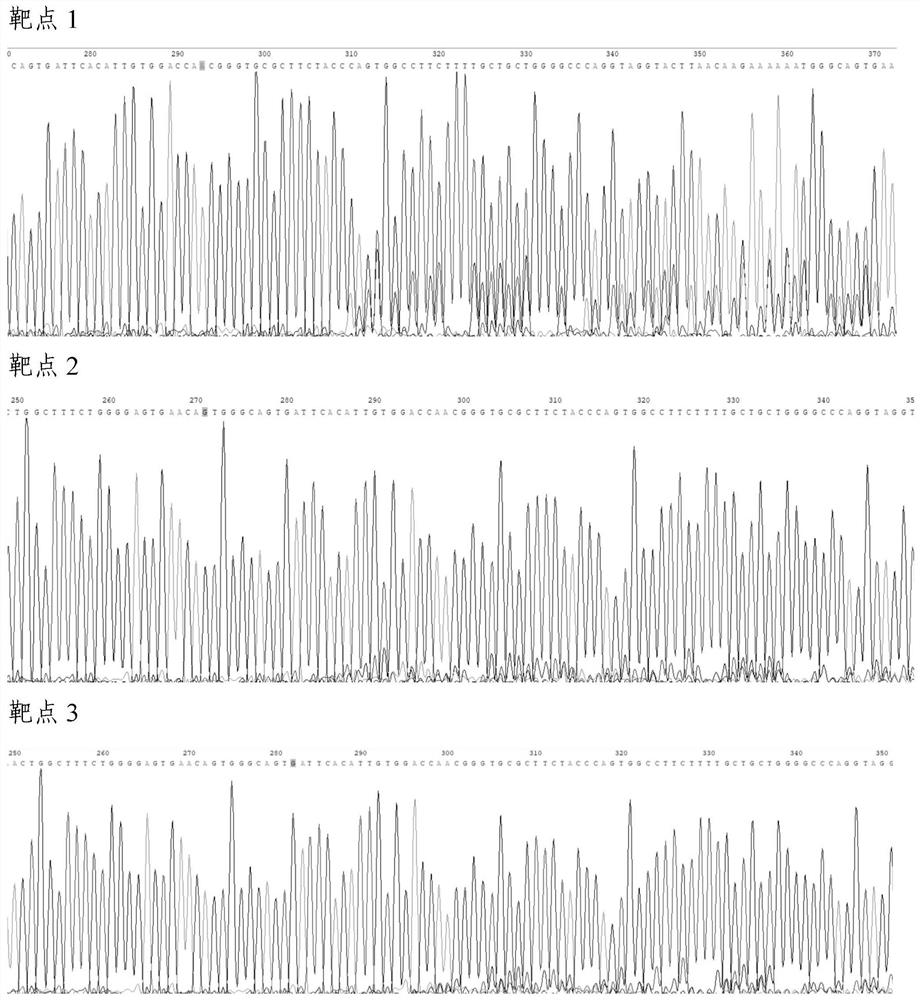Molecular marker related to lung cancer proliferation and metastasis and application thereof
A lung cancer cell and lung cancer diagnosis technology, applied in the field of molecular markers, to achieve the effect of inhibiting the proliferation of lung cancer cells and increasing the expression level
- Summary
- Abstract
- Description
- Claims
- Application Information
AI Technical Summary
Problems solved by technology
Method used
Image
Examples
Embodiment 1
[0032] Example 1 Detection of TMEM116 Expression in Lung Cancer Tissues and Lung Cancer Cell Lines
[0033] By immunohistochemical technique, the expression of TMEM116 was firstly detected in lung tissue sections of lung cancer patients. The results showed that the expression of TMEM116 in cancer tissues was significantly higher than that in adjacent tissues ( figure 1 ). Firstly, the paraffin-embedded lung tissue was dewaxed with xylene and hydrated with gradient ethanol, and the tissue antigen was retrieved by microwave high pressure method, and the tissue section was antigen-blocked with serum dilution solution, and TMEM116, CC10, β- Tubulin, α-SMA antibody overnight. On the second day, anti-TMEM116 was used as the 546 red fluorescent secondary antibody, and anti-CC10, β-tubulin and α-SMA was used as the 488 green fluorescent secondary antibody. After incubation at room temperature for 1 hour, observation and photography were carried out through an Olympus microscope. Ex...
Embodiment 2
[0035] Example 2 Construction of TMEM116 knockdown human lung cancer cell line
[0036] By utilizing CRISPR / Cas9 technology, the TMEM116 gene was knocked down in the human A549 lung cancer cell line.
[0037] Using the tool website, several targets for TMEM116 were designed, and after further optimization and screening, three candidate targets were identified, namely target 1: acgggtgcgcttctacccag, target 2: gtatttcccagacagaatac and target 3: cataaagctgactaagccac. Subsequently, the target point was connected to the W2 vector, which contained the G418 drug screening gene, and the three vectors were transformed into A549 lung cancer cells by lipofection method. 48 hours after transfection, G418 drug screening was performed, and the screened cells were harvested 1 week later and DNA was extracted for sequencing detection. The sequencing results showed that the sequence of target 1 was more obvious and had more miscellaneous peaks ( image 3 ), it can be seen that target 1 has t...
Embodiment 3
[0039] Example 3 TMEM116 Knockout Cell Function Verification
[0040] By detecting the proliferation, colony formation, migration and invasion of lung cancer cells, it was found that the above functions of TMEM116 knockdown human lung cancer cells were significantly reduced, see Figure 5 .
PUM
 Login to View More
Login to View More Abstract
Description
Claims
Application Information
 Login to View More
Login to View More - R&D
- Intellectual Property
- Life Sciences
- Materials
- Tech Scout
- Unparalleled Data Quality
- Higher Quality Content
- 60% Fewer Hallucinations
Browse by: Latest US Patents, China's latest patents, Technical Efficacy Thesaurus, Application Domain, Technology Topic, Popular Technical Reports.
© 2025 PatSnap. All rights reserved.Legal|Privacy policy|Modern Slavery Act Transparency Statement|Sitemap|About US| Contact US: help@patsnap.com



